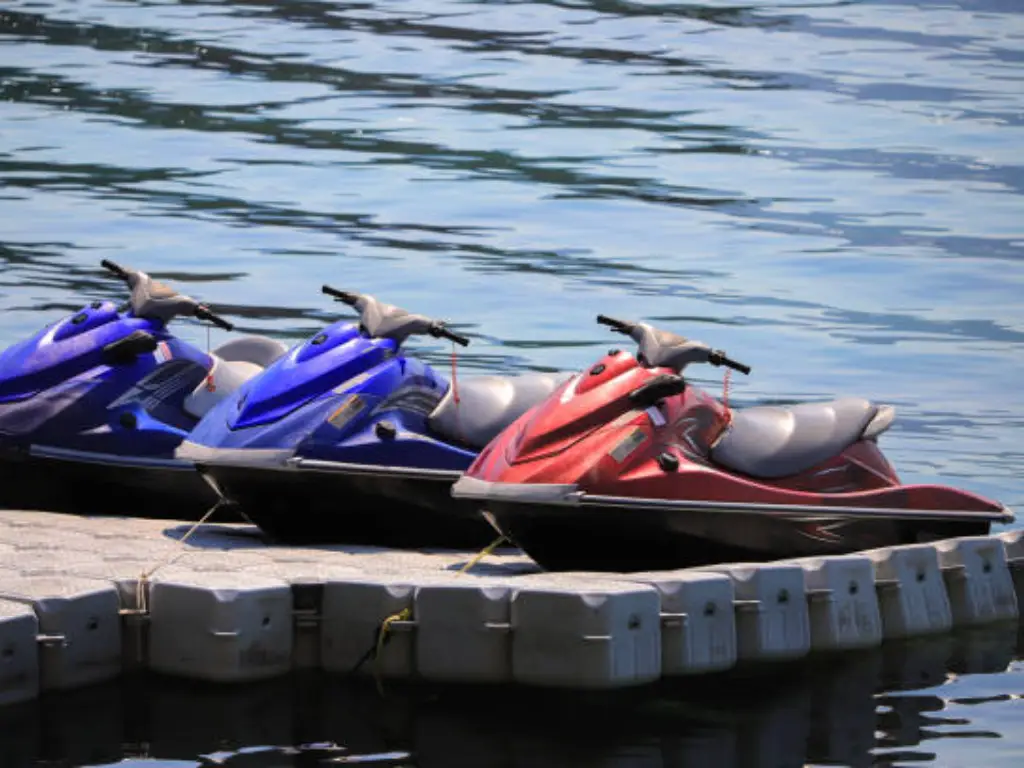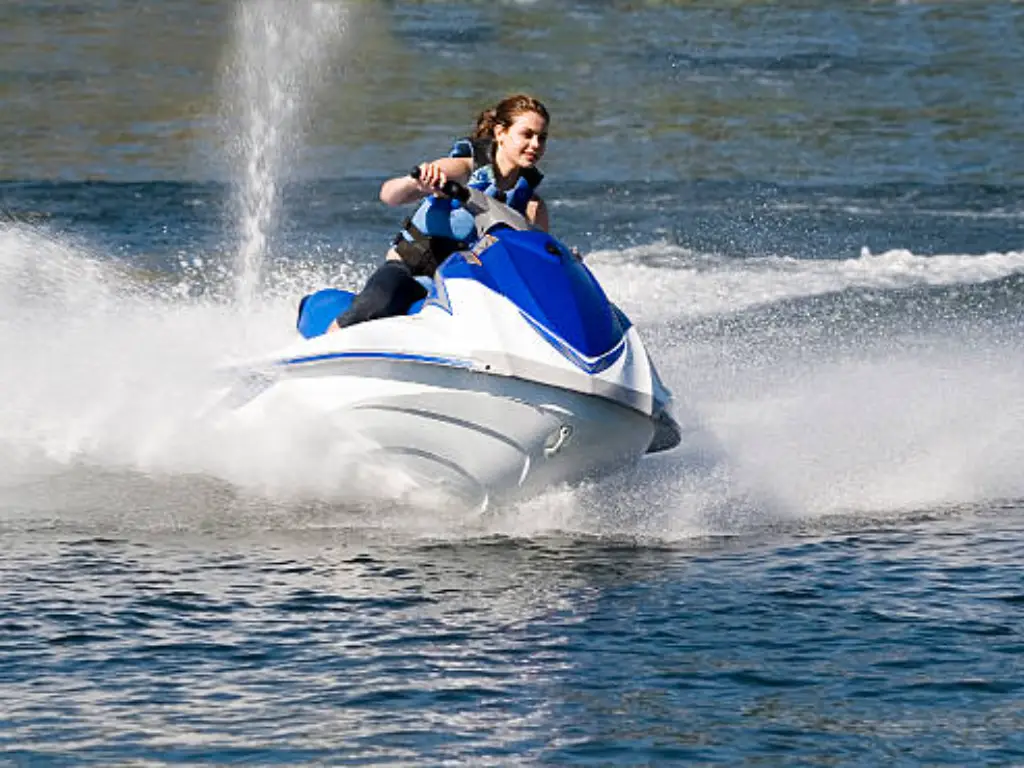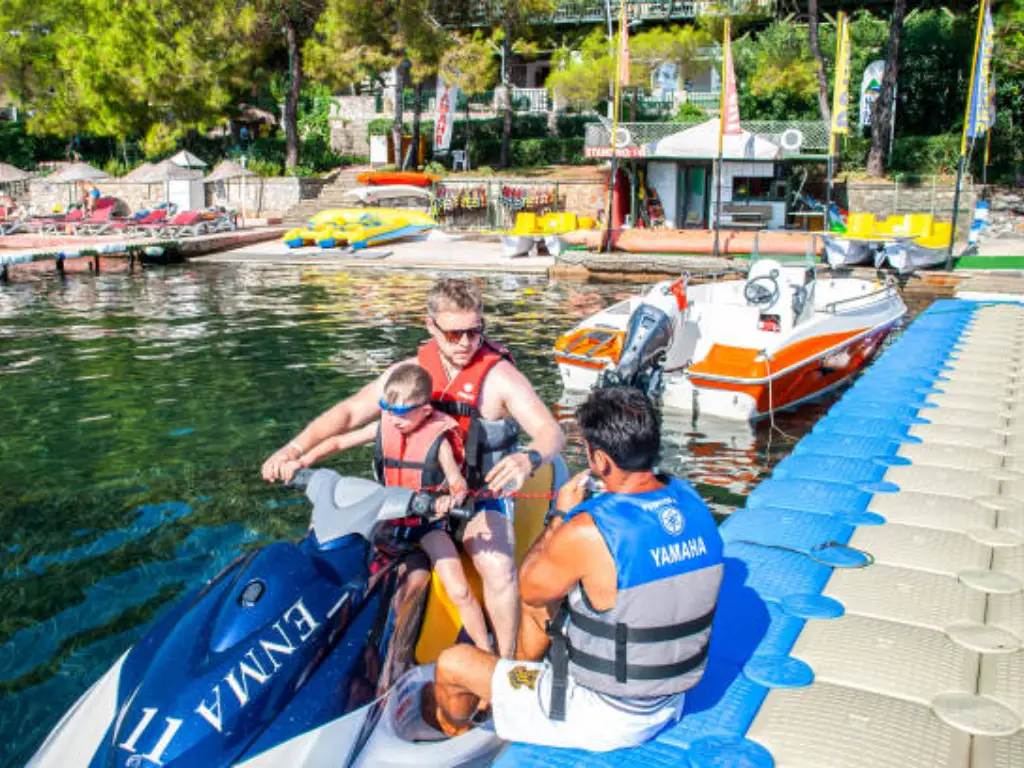The contemporary Personal Watercraft (PWC), or jet ski, provides a feeling of freedom on the water like none other. To most people, jet skiing is a great way to enjoy the outdoors; you get to enjoy the speed of a motorcycle with the special setting of boating. Unlike larger boats, modern PWCs are designed with advanced hulls that can achieve remarkable top speeds, making jet skiing an exhilarating experience enjoyed by fans across the globe. With this power and maneuverability comes a great responsibility, though. Adequate functioning is not only a question of fun but a vital part of watercraft safety on behalf of the rider, passenger, and all other individuals who may be sharing the water.
The following guide will serve as a detailed step-by-step guide for novice riders, helping you prepare for that first ride. It goes beyond mere instructions and inculcates in the learner a better knowledge of the machine, how it works, and within what environment it works. With these basics, you will develop the confidence and competence to operate your PWC safely and efficiently and reach the maximum potential of your time on the water. To begin with, a guided jet ski tour is the right way to go, but to become really good at it, there is nothing like rigorous knowledge and a certified boating safety course.

Before You Start: Essential Safety Gear & Pre-Ride Checks
A serious attitude towards safety should be set in place before the engine is even thought of. This is the most important stage of any jet ski ride, as it eliminates most of the risks that can be avoided.
The indispensable use of necessary safety equipment (the Personal Flotation Device or PFD, often referred to as a life jacket) comes first. You will need to choose a PFD that is certified by the regulator in your area (e.g., U.S. Coast Guard) and rated as a high-impact water sports PFD. It must be tight but not tight enough to restrict its motion, and must be still loose enough to ride down into the water without coming off.
Of equal importance is the personal watercraft safety lanyard, or kill switch cord. This is a rope that links the ignition system of the PWC to the operator. On one end, the ignition key and clips should be fitted into a special position on the console; on the other end, the ignition key should be firmly hooked to your wrist or PFD. Its role is basic but life-saving: when you fall off the PWC, the cord comes off the console and kills the power to the engine.
And lastly, perform a short yet comprehensive pre-ride inspection. It is a one-minute professional routine that resembles a pilot pre-flight inspection and can help avoid major problems.
- Fuel and Check Conditions: It is always advisable to look at the weather conditions and the predicted weather conditions before going out. On the craft, ensure that you have sufficient fuel to cover your intended trip by reviewing the fuel gauge, and always take in a reserve.
- Hull Inspection: Do a routine visual inspection of the hull. Check that there are no serious cracks or damage that may jeopardize the integrity of the craft and that the drain plugs have been firmly fitted. This is part of due maintenance, and this is the main key to long life.
- Debris Check: Take a view of the intake grate at the bottom rear of the PWC. Make sure it is free of seaweed, ropes, or any other debris that may block the jet pump.

Understanding Your Jet Ski’s Basic Controls
A PWC operates on a set of principles that can be counterintuitive. The physics of the machine and the function of each control are the basis for safe operation.
- Handlebars: Just like a motorcycle, the handlebars are your primary steering control. Actuation turns these, and the high-velocity jet of water that comes from the rear nozzle then turns the craft.
- Throttle: A lever control (or throttle lever) on the right handlebar that adjusts engine power. The more it is squeezed, the greater the acceleration. The craft slows down as a result of its release. It is important for it to be applied gradually and smoothly.
- Start/Stop Buttons: The engine ignition buttons should only be used when you are in a comfortable position and ready to operate the craft.
Two core operational principles distinguish a PWC from almost any other vehicle:
- No Power, No Steering: This is the most important concept for a new rider to understand. A PWC’s direction is controlled by the direction of the powerful stream of water it puts out. If you are not using the throttle, the handlebars will make no difference. The PWC will simply drift. You have to use some throttle to carry out a turn.
- No Traditional Brakes: Personal watercraft does not have a conventional braking system. Deceleration is accomplished by taking the throttle off. Although many of the PWCs available today have an Intelligent Brake & Reverse (iBR) or similar system for rapid braking, the core skill is learning to predict your stopping distance.
Boarding, Launching, and Docking Like a Pro
The transition from land to water is a point where both the rider and the craft are vulnerable. A disciplined and controlled boarding, launching, and docking technique is needed to avoid accidents and damage.

Boarding and Launching: When boarding from a dock or in shallow water, always board the PWC from the back or side. Swing your other leg over the seat, and put one knee on the boarding platform at the stern. Stay low and centered to stay stable. If a passenger is present, he or she should only board the vehicle after the operator is seated and the engine is running.
The water depth should be high enough when starting up the jet pump to work without sucking in sand, rocks, or other debris. A safe measure is to keep a minimum of 3 feet of water (about 1 meter). After sitting on the safety seat with the safety lanyard on, start the engine. Once you are out in open water and away from all obstacles and no-wake zones, slowly and gently apply the throttle to move away from the dock or shore.
The Challenge of Docking: Docking is one of the biggest problems that new riders face, and also a challenge for experienced riders. When the structure at the end of the line is a solid object such as a wooden or concrete pier, speed and direction control are critical. Incorrect calculations may result in impacts that scratch, gouge, or structurally damage the hull of the PWC. This is where the design and quality of the docking facility itself a key determinants of asset protection and rider safety.
Why a Quality Floating Dock Matters
The docking interface is a piece of equipment that can either reduce or increase risk. Modern solutions have shifted towards the use of sophisticated polymers such as High-Density Polyethylene (HDPE), which is the preferred material for premium floating dock systems.
Experienced manufacturers like Hiseadock, who have engineered these systems since 2006, use HDPE to design a docking solution that directly addresses the challenges of PWC applications.
- Vessel Protection: The first is shock absorption. Unlike hard materials, the durable HDPE construction of a Hiseadock system is forgiving, keeping your PWC’s hull protected from abrasions and damage.
- Stability and Safety: A well-designed floating dock offers a stable platform. Its modular design allows it to lift and lower with water condition changes, and a non-slip surface and rounded safety corners help to reduce risk.
- Durability and Low Maintenance: HDPE enhanced with anti-UV agents ensures that these docks remain resistant to sun degradation. They are virtually maintenance-free when compared to wooden docks. This simple use and durability are a better long-term investment.
Looking for Reliable Jet Ski Docks?
Hiseadock, with 10+ years of experience and a daily production capacity of 1,120 docks, provides premium, customizable floating docks worldwide, ensuring durability and quick delivery.

- Custom sizes, shapes, and colors
- UV-resistant HDPE material
- 30% longer lifespan than standard docks
- Standard Docks Shipped in 7-10 Days
- Quick Setup – 2 People, 1 Hour Installation
Mastering the Basics: Acceleration, Steering, and Stopping
Once in open water, you can start to learn the dynamics of how the PWC handles. The trick is to move smoothly and slowly.
- Smooth Acceleration: Find a large, open space that is free of traffic and hazards. From a stop position, slowly accelerate the throttle. Experience the feel of the craft and how the power of the engine converts to forward motion. Practice accelerating in a straight line until you are comfortable with the sensitivity of the throttle. Avoid full-throttle applications that push the nose up sharply, which can unseat a rider who is not ready for that.
- Steering and Leaning: Once you are moving at a steady low speed, start practicing turning. The key to remember is that you need to be on the throttle to steer. Initially, you are going to make big, sweeping turns. As you twist the handlebars, your body should twist in the direction of the twist. By shifting your body weight forward, you lower the center of gravity of the craft and cause it to “carve” through the water, giving a smoother and more stable ride. The greater your lean, the tighter the turn.
- Controlled Stopping: Practice bringing the PWC to a stop from different speeds. Let the throttle go and let the craft coast and see how far it goes before it stops. This must be repeated until you have an intuitive sense of your stopping distance. If your PWC uses an iBR or reverse system, get used to using it in open water so you know how it feels and how much slower it slows the boat. Don’t put all your hopes on it in a panic situation; anticipation is the best tool.
How to Handle Turns and Cross Wakes Safely
As your confidence grows, you will experience more dynamic conditions, including making tighter turns and riding on the wakes of other boats.

Executing Tighter Turns: To execute a tighter turn, you will need more speed and a more aggressive lean. As you begin to go into the turn, transfer your weight hard to the inside, while keeping your eyes looking through the turn to your exit point. Keep the throttle at a constant level during the manoeuvre. If you feel the craft starting to slide or feel unstable, back off a little on your lean and on the sharpness of your handlebar input.
Crossing Wakes: A wake is a wave that is caused by a moving boat. An incorrectly tuned trim can result in an unstable and jarring ride, or even cause the PWC to unexpectedly fly up in the air. The right way is to come into the wake at an angle, about 45 degrees.
- Slow down a bit before you hit the wake.
- Keep your knees bent and body loose to absorb the impact.
- Keep the throttle at a light steady position as you cross over.
- Do not hit a large wake directly (90 degrees) because this will throw the bow of the PWC into the air, or at a parallel angle to the wake, which can cause the craft to roll uncomfortably. By crossing at an angle, you cut through the wave and stay as stable as possible.
What to Do If You Fall Off Your Jet Ski
Falling off your PWC is not a question of “if,” it is a question of “when.” It is a normal event, particularly for beginners, and is not dangerous if you are prepared. This is exactly why the safety lanyard and PFD are non-negotiable.
When you fall, the safety lanyard will release and the engine will shut off, leaving the PWC in the area. Your PFD will keep you afloat. Take a moment to get your breath back. The first rule is to stay calm.
To re-board, always come up the back of the PWC. Trying to board from the side may easily result in the craft turning over.
1. Swim around to the stern of the watercraft.
2. Most PWCs have a boarding platform or step. Hold one hand on the platform and one on the bottom of the seat or grab handle.
3. Pull with your arms and kick with your legs, getting one knee up on the boarding platform.
4. From this position, gently swing your other leg over the seat and get into your riding position.
5. Once you are safely seated, re-clip the safety lanyard, look around, and then start the engine.
Top 5 Common Beginner Mistakes to Avoid
By being aware of common errors, you can actively work to avoid them.
| Irrtum | Description / Consequence | Pro Tip / How to Avoid |
| #1: Operating at High Speed in Crowded Areas | Many accidents occur near docks, marinas, and beaches. These areas have high traffic density and often have “no-wake” speed restrictions for a reason. | Always operate at a slow, controlled speed within 200 feet of shorelines, docks, or other vessels. Treat no-wake zones with absolute respect. |
| #2: Forgetting the “No Power, No Steering” Rule | In a potential collision scenario, a beginner’s instinct is to release the throttle. As explained, this results in a complete loss of steering control. | In an avoidance maneuver, remain calm. Keep the engine engaged and steer decisively away from the obstacle. Practice this in open water to build muscle memory. |
| #3: Neglecting the Safety Lanyard | It can be tempting to forego attaching the lanyard for a short ride, but this is a critical error. An unmanned PWC at speed is a serious danger. | Make attaching the lanyard the first thing you do after sitting down and the last thing you do before getting off. It should be an unbreakable habit. |
| #4: Following Other Vessels Too Closely | A PWC can stop much faster than a traditional boat, but tailgating is still extremely dangerous. You have limited visibility over the wake of the boat in front of you. | Maintain a safe following distance of at least 200 feet from other vessels. This gives you ample time to react and a clear field of vision. |
| #5: Lack of Spatial Awareness | Focusing only on what is directly in front of you is a recipe for disaster. Watercraft can approach from all angles. | Constantly scan your surroundings—left, right, and behind you—especially before making a turn. Be predictable in your movements so other boaters can anticipate your actions. |
Basic Rules of the Water: Rider Etiquette
When you use a PWC, you are part of a larger community of boaters, swimmers, and anglers. Following set rules and etiquette helps to maintain a safe and enjoyable environment for all.
- Right-of-Way: Generally speaking, vessels coming from your right (the starboard side) have the right-of-way. Slower-moving vessels such as sailboats and fishing boats also generally have priority. When in doubt, yield.
- Overtaking: When passing another vessel, it is best to do so on its left (port) side, leaving a wide margin.
- Head-on Approach: If approaching another vessel head-on, both vessels should make a turn toward their right (starboard) side to pass.
- Respect Wildlife and Environment: Do not chase or harass wildlife. Be careful of shallow seagrass beds and other delicate marine environments. You don’t want to spill fuel when refueling.
- Noise Levels: Be mindful of the noise your PWC creates, particularly in areas near residential areas, shorelines, or anchored boats.

Schlussfolgerung
Learning how to ride a jet ski is a process of building skills on a foundation of safety and proper maintenance. From pre-ride discipline to on-water handling mastery, it sets the stage for a transformative journey through the thrilling realm of wakeboarding. By following a responsible, methodical approach to boating, you elevate your status from being an average operator to one who is a competent contributor to the boating community. For further development, we highly recommend that you attend a practical safety course. Follow these tips, stay alert, and have fun with each jet ski ride.





